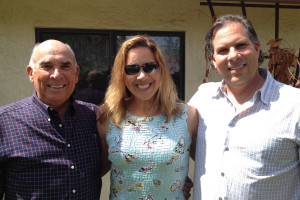One in three adults in America has cardiovascular disease (CVD). Every year, nearly one million people have their first heart attack. Of those, 141 thousand die.
Thankfully, my father wasn’t one of them—he lived. But I do not want my siblings, children or I to follow in his footsteps…and possibly not have the same outcome.
How does NO protect you from CVD?
Nitric Oxide is a signaling molecule. It signals:
- Arteries to relax and expand
- Immune cells to kill bacteria and cancer cells
- Brain cells to communicate with each other.
NO is the compound manufactured by the endothelium to relax and dilate arteries. The endothelium is the lining of your blood vessels (all blood vessels). It is so profuse in your body that if you took all the endothelial cells from your body and laid them out on a flat surface, they would cover a soccer field.
Nitric Oxide is manufactured in the endothelium, via several different biochemical pathways:
- L-arginine (an amino acid found in meat, fish, dairy, beans and nuts) combines with oxygen to produce NO. The enzyme responsible is called Nitric Oxide Synthase (NOS).
- Chemical compounds of nitrate and nitrate can make NO.
Low NO would mean vasoconstriction…or the narrowing of blood vessels.
Without enough NO you can have under-developed arteries, develop high blood pressure or hypertension. The increased pressure in the tightening arteries damages the arterial walls, setting the stage for plaques to grow. And there is already barely enough room for the blood to get through…plaquing would just not do!
The damage done to your arterial walls creates both inflammation and oxidation – neither of which are a good thing. Think about a fire and a rusting fire hydrant happening at the same time and in the same place – your arteries! And to make matters worse, the high blood pressure, chronic inflammation and oxidation of the plaque further decrease your ability to make NO, leading to more CVD, leading to less NO, and so on.
High fat diets decrease NO. THAT is why it contributes to heart disease. Nearly all risk factors for heart disease are so for the very reason that they decrease NO: high blood pressure, high LDL cholesterol, high total cholesterol, low HDL cholesterol, high triglycerides, diabetes, cigarette smoking, physical inactivity high levels of the amino acid homocysteine, and aging. While it is not yet known exactly why each of these decrease NO, but two working theories are the following:
- Each of these risk factors increase the compound asymmetric dimethylarginine (ADMA), which blocks the production of the NO-generating enzyme NOS, and therefore blocks the production of NO.
- Each of these risk factors also increase oxidative stress, which quickly inactivates NO after it’s produced.
What other damage can be created by low NO? Nitric oxide is also produced and needed in the brain and the immune system. We have three different types of enzymes for the creation of nitric oxide in these areas:
- In the brain, it’s neuronal nitric oxide synthase—nNOS.
- In the immune system, it’s inducible nitric oxide synthase—iNOS.
- In the endothelium, it’s endothelial nitric oxide synthase—eNOS.
eNOS and nNOS play a role in almost every, if not every organ system: in the hormone-generating glands of your endocrine system, in your digestive system, in your respiratory system, in the brain and spinal cord of your central nervous system…even in your bones and joints.
The lack of NO in our bodies is literally tied to high blood pressure, heart attacks, strokes, diabetes, kidney disease, sleep apnea, asthma, arthritis, dementia, Alzheimer’s, cancer, erectile dysfunction, and more. The breadth and depth of its role in our body is just now beginning to be investigated.
GOOD NEWS! You can slow down the loss of NO, you can stop the loss of NO, you can reverse the loss of NO and there are plenty of ways to generate more NO:
- A diet rich in NO-producing nitrate and nitrite (mainly from leafy greens),
- An NO-boosting supplement,
- NO-restoring regular exercise, and
- Lifestyle factors that preserve and increase NO, such as sufficient sleep and stress control.
- People who live in high altitudes for a period of time generate more NO.
———————————
This information was all brought to you courtesy of a review of The Nitric Oxide (NO) Solution by Nathan S. Bryan, PhD and Janet Zand, OMD.

